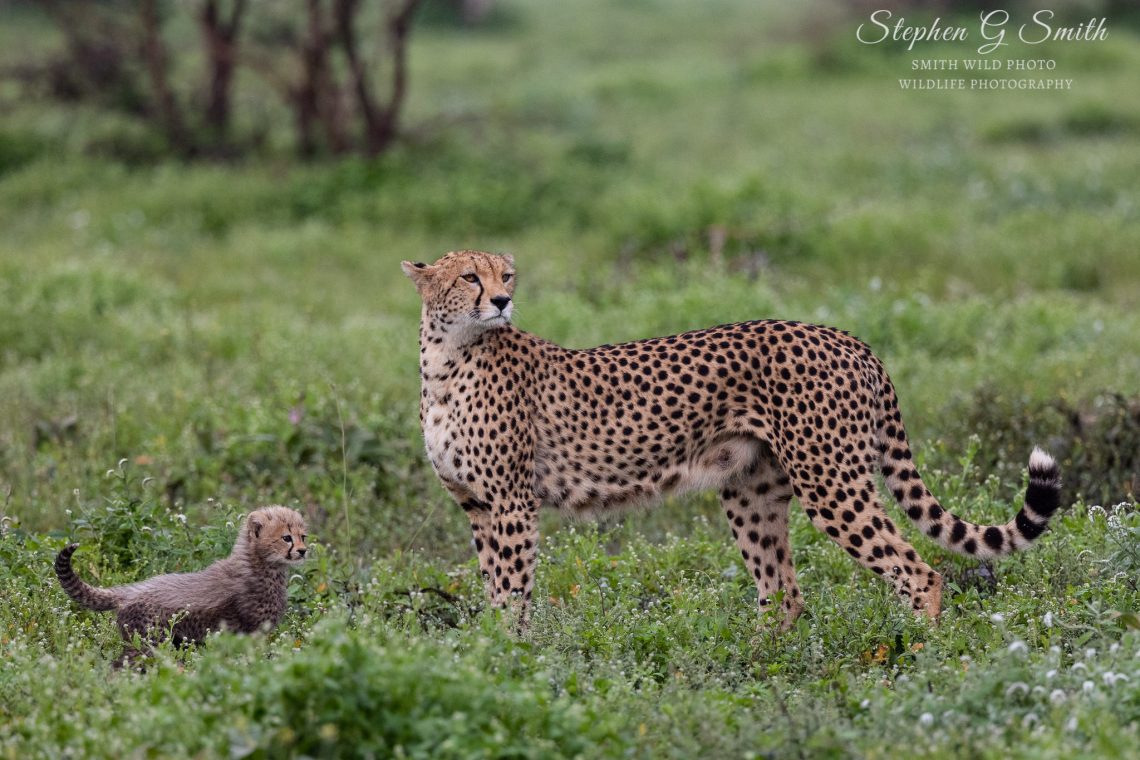It’s going up for three years since we were last on African Soil. Chobe, Botswana in the summer of 2019 was a game-changer. We learnt so much more about photography. Discovered new ways to compose, playing with exposure, or simply focussing on the little things. And with its abundance of wildlife, there was ample opportunity to keep practising. We came away with 12000 images and an even greater enthusiasm for our subjects (if that was possible). We immediately began planning our return to Africa.
Then along came the pandemic. Travel came to a stop. Thank you SARS-CoV-19!
It’s time
Like many others, our planned and booked trips were postponed. For two whole years, we watched and waited as the pandemic moved across the world. Would we ever travel again? Melodramatic perhaps. But with so much riding on worldwide virus containment, vaccination rollouts, testing, it was sometimes hard to keep reminding ourselves to say ‘when’ not ‘if’?
And then finally came the glimmer of hope. Followed by the green light that said ‘you are good to go’.
Tanzania has always held a special place in our hearts. Yet despite having visited twice before, the Serengeti National Park had somehow never made it onto our agenda. So when we had the opportunity to switch our previously planned India trip (which would have landed us right in the epicentre of the Delta variant) we jumped at the chance to tick off this popular tourist location.
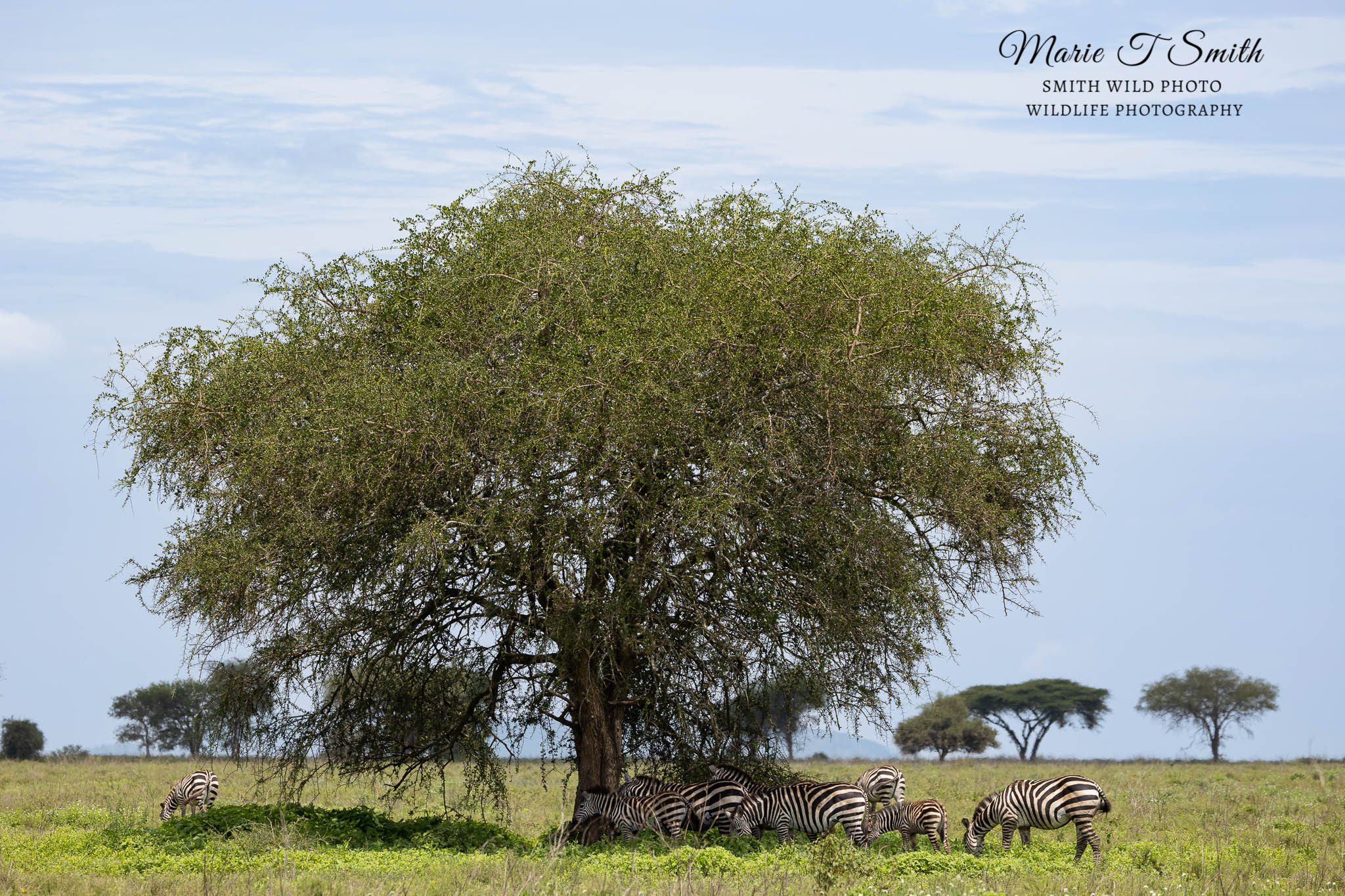
Famous for its extensive acacia savannah, and huge herds of gazelle, wildebeest and zebra it is iconic. I suspect it’s the picture so many of us imagine when we think of Africa, thanks to the many TV documentaries filmed there.
So began the process of wading through the testing, vaccination protocols for transit and destination countries. So many systems, and don’t get me started on all the QR codes. I was seeing them in my sleep. We uploaded, downloaded, screenshot and printed until we could happily have thrown the laptop out of the window. But eventually, we were done.
We left our Scottish home on 17th February 2022. Armed with negative PCR test certificates, a ridiculous amount of paperwork and mobile apps, several bottles of hand sanitiser and a box full of face masks, we were ready to return to Africa once more. Excited – but yet a little trepidatious. We are seasoned Africa travellers. Not much normally phases us. But Covid times have made travel a little different right now.
Out of the way, we’ve got a plane to catch
Who could have imagined our return to Africa would almost be thwarted before we were even airborne. Not by Covid travel documents. Oh no…
By storm Eunice!
Were you one of the 140,000 watching Big Jet TV on YouTube1 on Friday 18th Feb? Well, that very day was when we should have landed at Heathrow Airport. Instead British Airways, understandably, cancelled our Aberdeen departure. And sent us into a spin. We were over 500 miles away, sat in a hotel in a raging blizzard, with just 16 hours to check-in for our international flight out of London.
We spent the next two hours trying to hook up with alternative transport. Trains, planes, all cancelled. Future flight dates were already full. PCR tests would time out if we were not on that flight. In the end, we concluded there was really only one option if we really wanted to see our long-awaited return to Africa.
Get in the car and drive.
We battled heavy snow in Aberdeen and drove south, through the night, to meet our outbound flight to Nairobi. Feeling a bit like Phileas Fogg we kept watching the clock, cross-checking the Sat Nav, and praying we wouldn’t hit any metaphoric bumps in the road along the way. At 4:30 am we handed my car to two young men in an unlit car park out of the back of nowhere, and tried not to worry if we would ever see it again.
We arrived at Heathrow, dishevelled, cold, tired and probably more than a little bit sweaty. Sorry fellow passengers. We patted ourselves on the back, forced down some breakfast (the adrenalin would pump for at least another 36 hours), showed our paperwork, boarded the plane, toasted with a G&T – and fell asleep.
It’s like coming home
Three flights and two layovers later we touched down at Ndutu airstrip. As the giraffe skidded across the sandy soil runway, I swallowed down a lump in my throat. My heart did a happy dance. We had made it. Our much anticipated post-Covid return to Africa was real.
Hello Africa. Hello, sunshine.
Wait. What’s that I see?
Wellies.
Our guides for the trip were all wearing wellies! We wondered, was it a sign of things to come? Or was it just a good insurance policy? More about that later.
Two camps, 83 big cats, and a whole lot of rain
Ndutu
Ndutu is situated between Ngorongoro Conservation Area and Serengeti National Park. Home for the first half of our tour was Elwai Camp, a previously mobile camp, now under new ownership and operating as a high spec permanent set up. Flushing loos, hot water showers on tap, and the food delicious and plentiful. Soups, especially, were a winner with the Smiths!
What’s more, they even had wellies lined up for us guests. Uh oh…
Our first game drive was just the best feeling. A sunny evening, and a cheetah mum with two tiny cubs. What’s not to love?
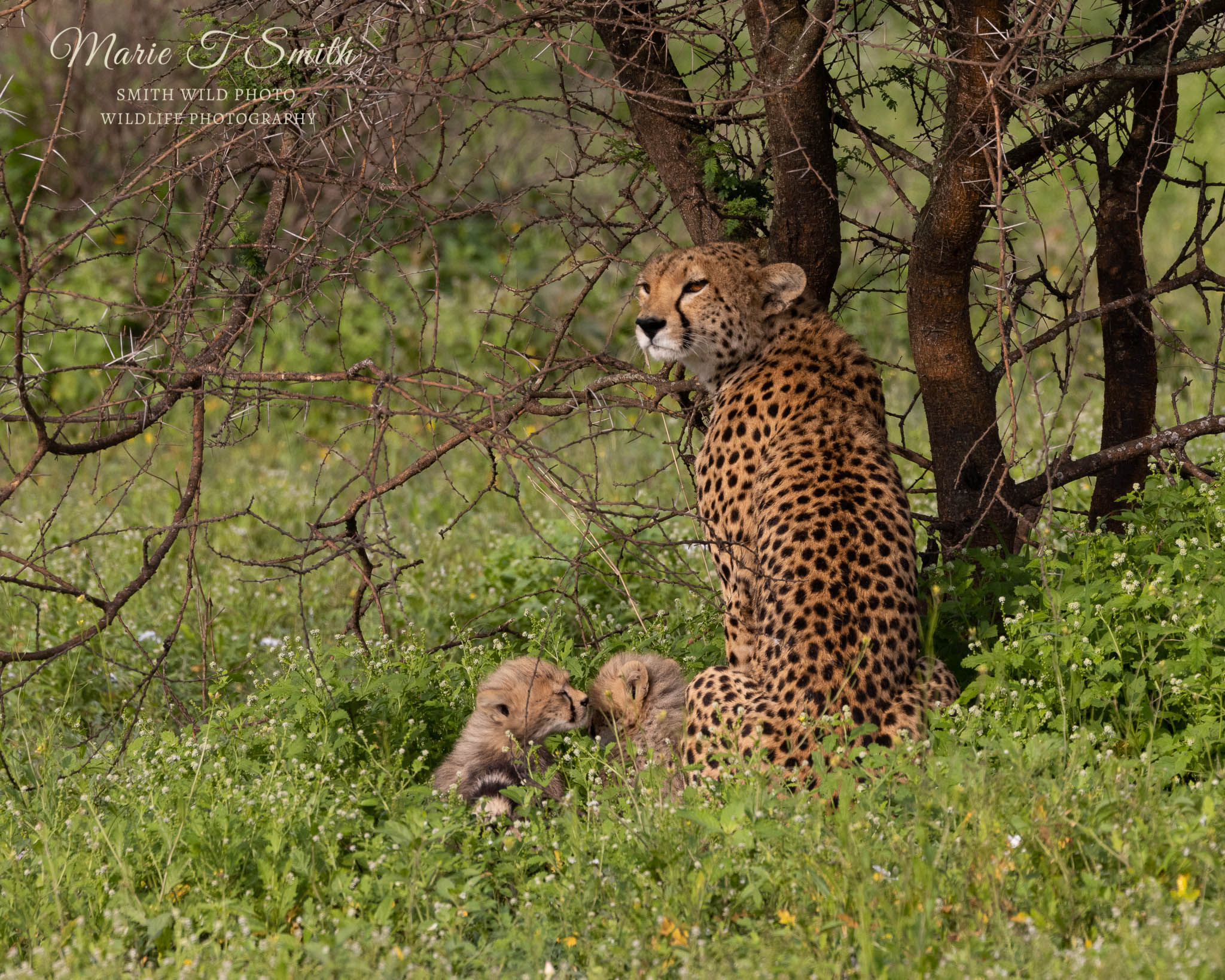
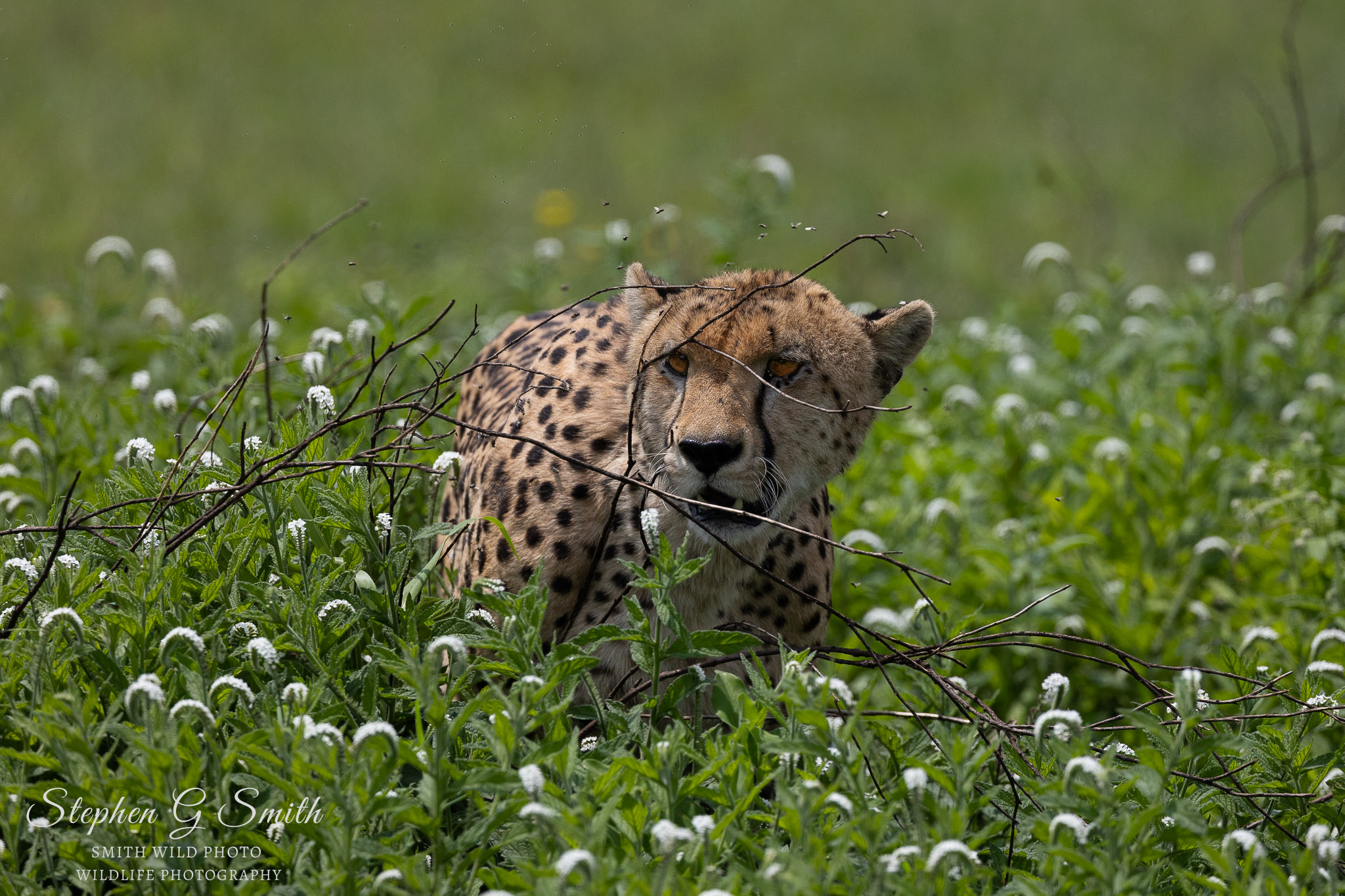
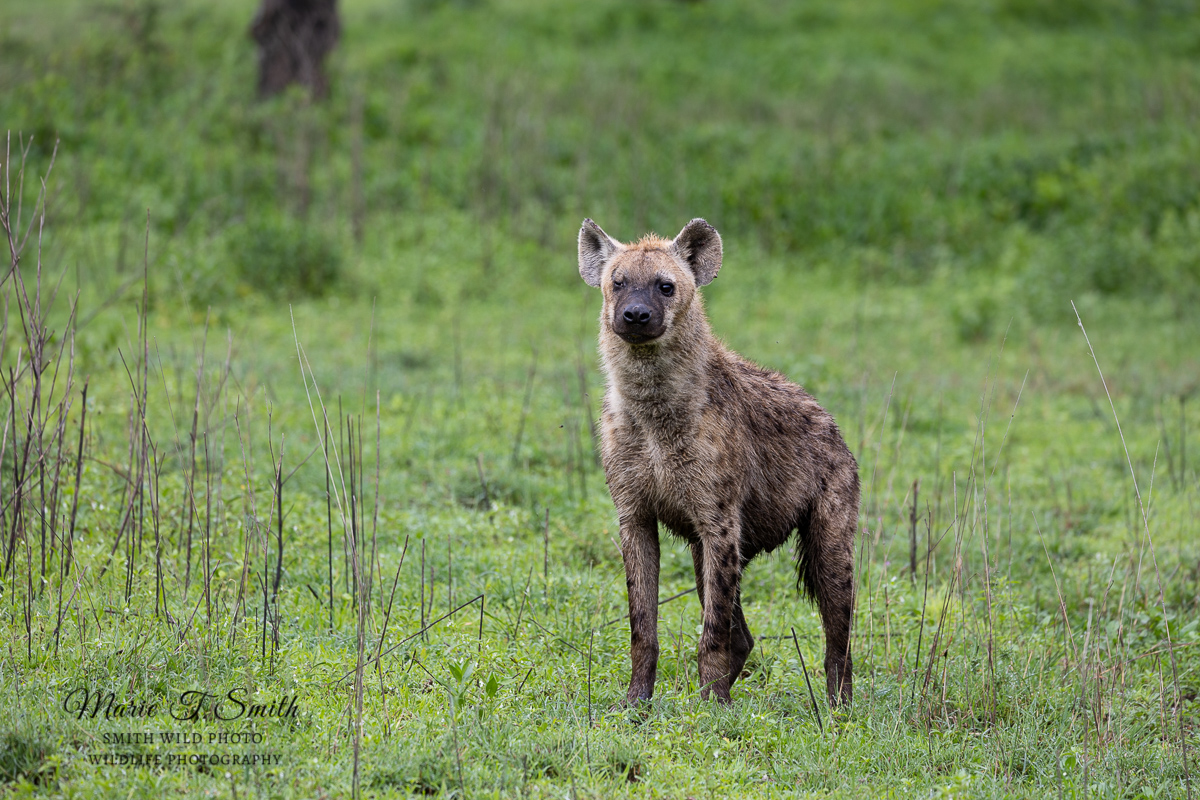
The following three days offered ample opportunity to see more big cats. And plenty of other wildlife too. It really did feel amazing to be back.
Apart from the rain.
Serengeti National Park and the Kopjes
Midway through the tour, we moved into the Serengeti National Park. The views as we passed through the Naabi gate were to die for. Now, this was what I imagined the Serengeti to be like. We tried to capture it with the camera but there was just too much to take in. Our eyes would be our lens, our brains would be the SD card.
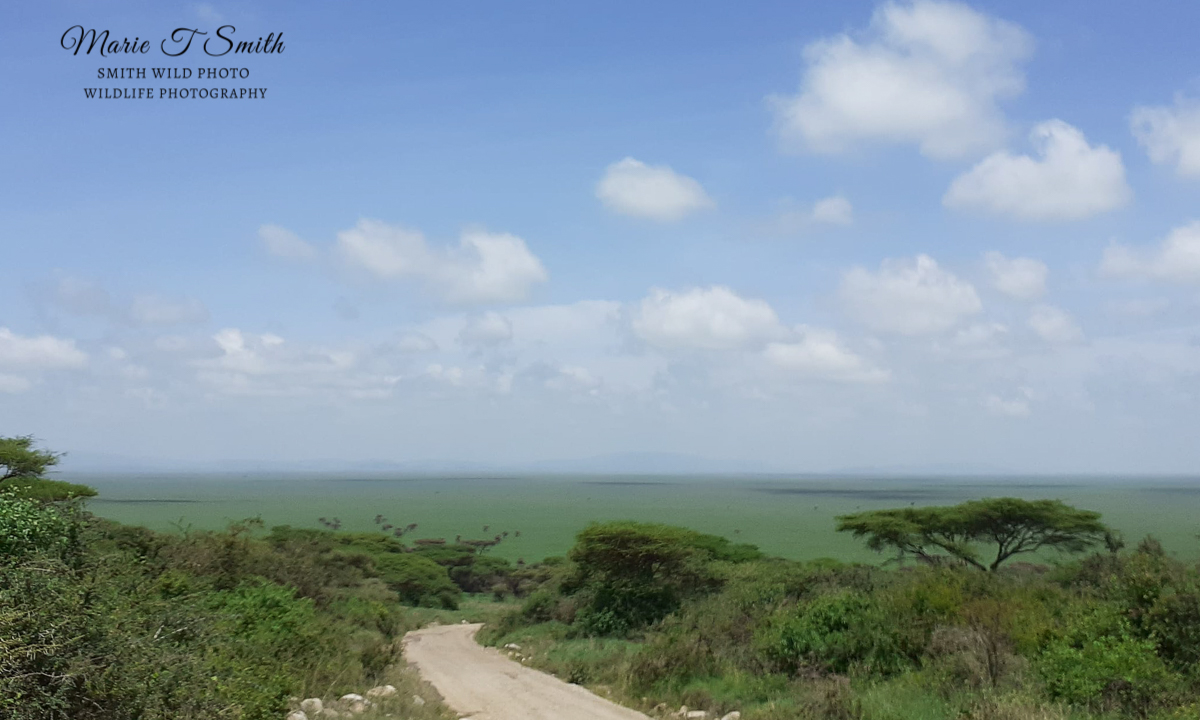
This part of the tour was centred mostly around the Gol Kopjes2 (pronounced ‘kop-eez’) locality. These granite rock formations with volcanic origins are situated in Eastern Serengeti. The area requires a special permit. It also happens to be popular with big cats. Great places to den cubs, peruse the ‘menu’ or just sleep. Indeed you couldn’t move for lions on our first day out.
‘Oh look, another lion on a rock’
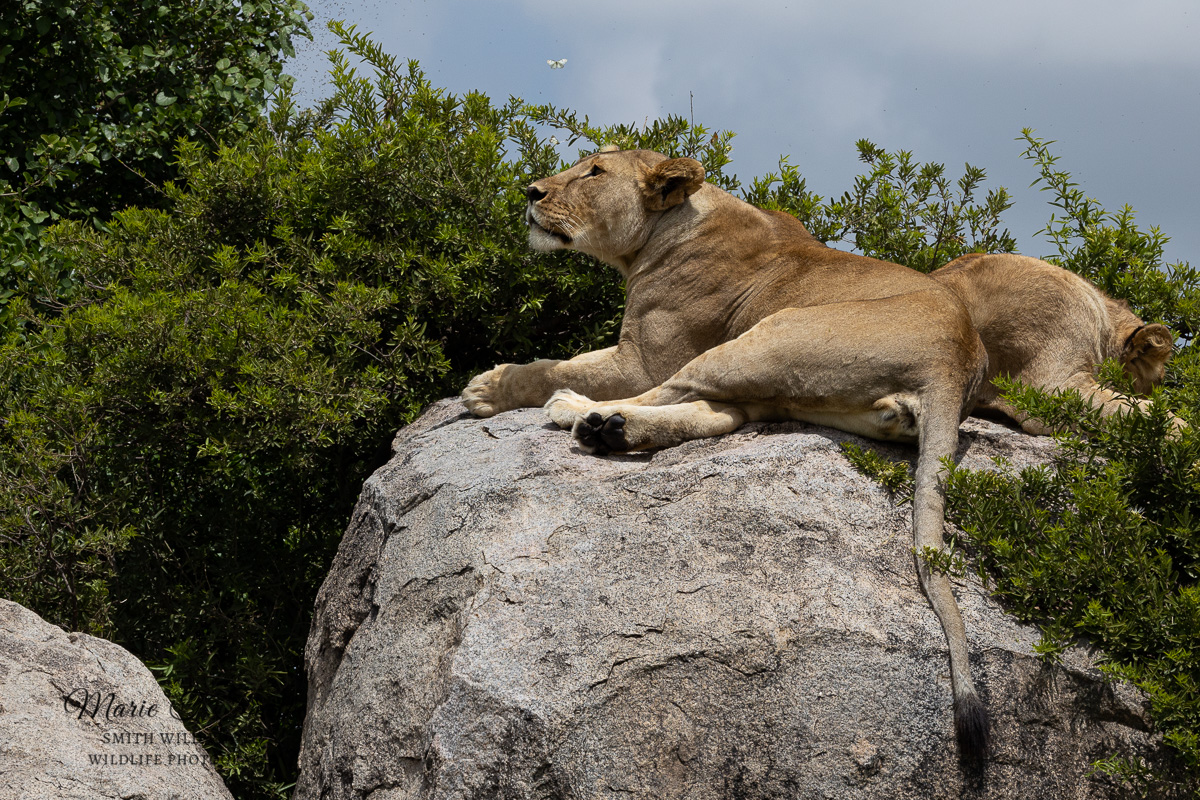
Subsequent days would see them move onto the plains. Along with a bounty of cheetahs too! One day I think we counted we had seen 15 or 16? Not too surprising as it’s a cheetah conservation area. Off-roading is not permitted, so they were often too far away to photograph. But fabulous just to sit and watch. Will they make a move on that gazelle or won’t they?
As far as big cat sightings go, you could not complain of being short-changed. Were there 83? I have no idea. I didn’t tot it up. But we had a LOT of encounters. Multiple sightings daily – in both locations.
If only the rain would have given us a break and let us have some better light.
Did I mention the rain, by the way?
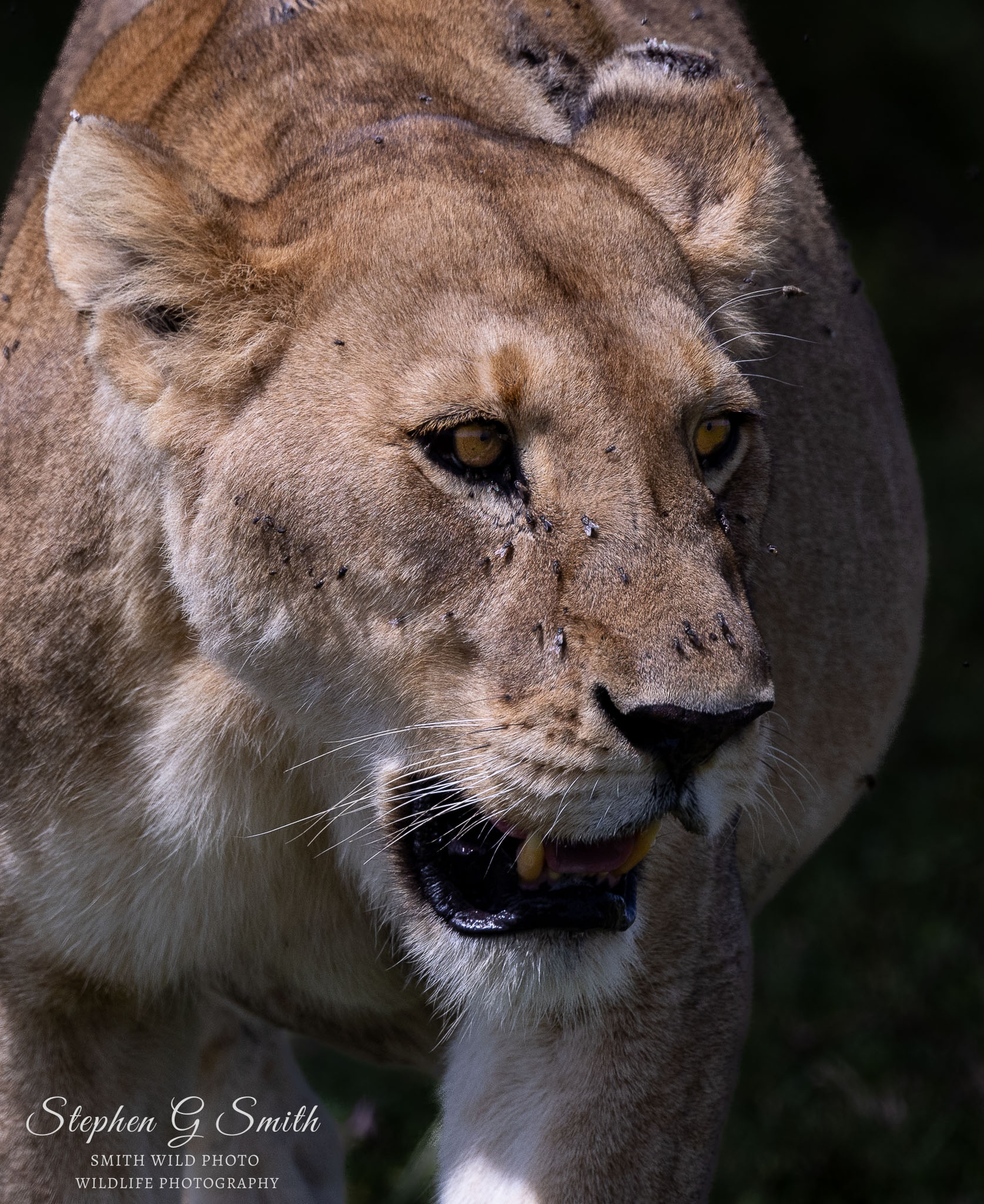
Hello Muddah, Hello Faddah
For those that don’t know, Serengeti typically has two rain seasons. The short rains being Nov/Dec. The long rains being March to May and forcing some camps to close due to impassable roads. In between, some showers may come, but not generally enough to affect activities.
It seems 2022 is the year the Serengeti chose to welcome us back with its own version of a celebratory champagne spray – daily.
Road conditions were challenging pretty much the entire tour. I don’t think there was a day that went by when one of our vehicles didn’t get stuck and needed a nudge or a tow. Our access from Olmara, our second camp, included a ford across a river. A tractor was enlisted to help vehicles over, as the water levels rose to almost window sill level on the Landcruisers.
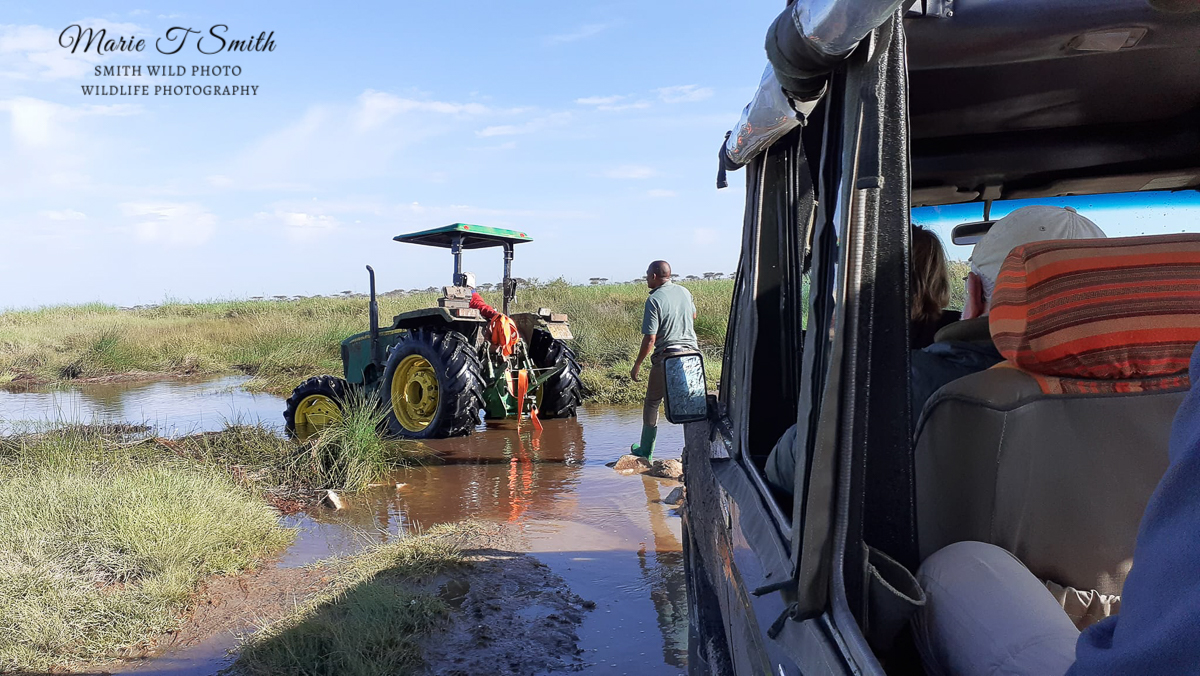
Days and nights were cooler. The shorts and T-shirts stayed in the bag. We practically lived in the only fleece we had each packed. And with laundry taking days to dry we can only say ‘sorry again fellow passengers‘.
But where there’s a will, there’s a way. Plans were revised more than once. Routes, timings and destinations were amended. For the latter part of the tour, we stayed out the entire day instead of returning for lunch, to minimise lost time transitting between camp and photo location via slow slippery tracks.
Yes there were challenges
We are home now and reflecting on the trip. I think we all agreed, it has not been without its challenges.
Covid paperwork
I won’t lie. Trying to be one step ahead of the paperwork and testing was stressful. And time-consuming. Each country still has its own rules, and sometimes eccentricities. But now we have experienced several border crossings first hand, we realise it’s not so bad. It’s tiresome – but it’s not scary. And it’s a small price to pay to be back in the countries we love so much. We hope it will become more unified as world travel opens. A word to the wise – before setting off back to the UK make sure you have done your return paperwork3. It’s so easy to be in the moment and forget to allow time to update all the online systems and papers for the return journey.
We could easily have delayed our trip once again ‘until we are back to normal’. But a conversation we had with our guide, one day, helped put it all into perspective. Africa needs us back. Now. Not next year or the year after. The safari industry needs us back. But most of all the wildlife needs us back. As parks were devoid of human activity, so did poaching increase. We knew at that moment we had made the right decision.
Our inconvenience was tiny in comparison. I mean, we even forgave our sore ears from the continuous mask-wearing.
It’s time to put our big girl pants on and return to Africa.
Weather
As for the rain, it was nuts! We had packed based on our memories of hot days and warm nights. Yet trench foot from wet boots/trainers was more likely than sunburn. I still smile at the lad in camp who proudly presented us with our freshly hosed trainers. Free from mud, but sopping wet, he wanted to give us a nice surprise. Little gestures go a long way to bringing you back to what matters. Now permanently wearing camp wellies, I thanked him and hung them outside the vehicle to dry.
Meanwhile, the way our two guides dealt with the track conditions is incredible. Crossing deep fords, pushing vehicles out of the mud is second nature for them. An adventure for us too, you could say. Though we did long for the rain to stop, and the roads to dry, so we could get in position, maybe even by a lion on a rock, at sunrise. Photographers dream of the golden light.
We can laugh now, but at times I couldn’t help but recall this song about a boy at a wet summer camp 😀
No, of course we didn’t want to come home. Not for a minute 😀 But the reality is, this weather was unseasonal. And it did upset the schedule a tad. Perhaps our planet is trying to tell us something? After all, even before we had left the UK, the weather did its best to stop us from getting airborne didn’t it?
Did it measure up?
We have enjoyed safaris in Tanzania previously. Selous Game Reserve (north of the Rufiji) and Ruaha National Park are both pretty special locations in the central and southern regions of the country. Still relatively unspoilt by mass tourism, yet with plenty of wildlife to enjoy, and photograph, in peaceful surroundings.
Ndutu reminded me a little of Ruaha. Greener, hillier, lots of bush and tree cover, marshes, open plains, watercourses and lakes. Maybe a little more vehicle movement than my recollections of Ruaha, but still varied and with ample wildlife.
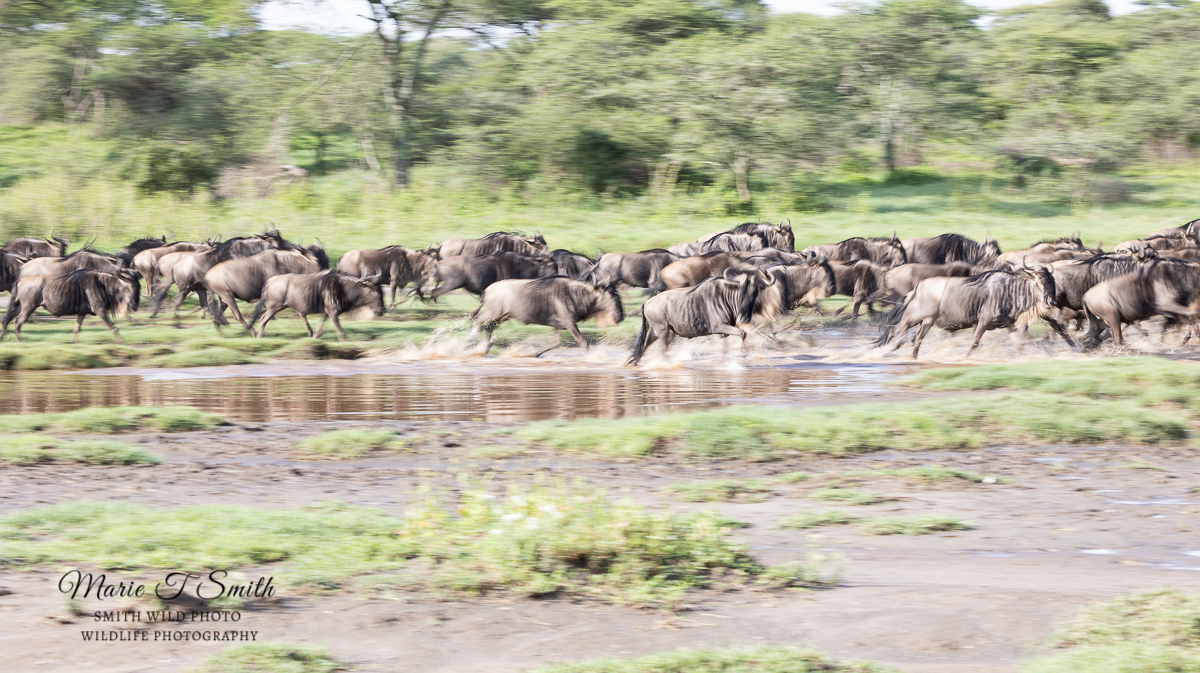
The Serengeti National Park, by comparison, is vast and beautiful. But at this time of year, it is lacking in plains game. I guess if you understand the migration route4, then it makes perfect sense. They were still hanging around Ndutu. Not due in the Eastern Serengeti for another few months. I just wasn’t prepared for that. On a map, our two locations look closer together. But clearly, the route is critical to what you can see – and when.
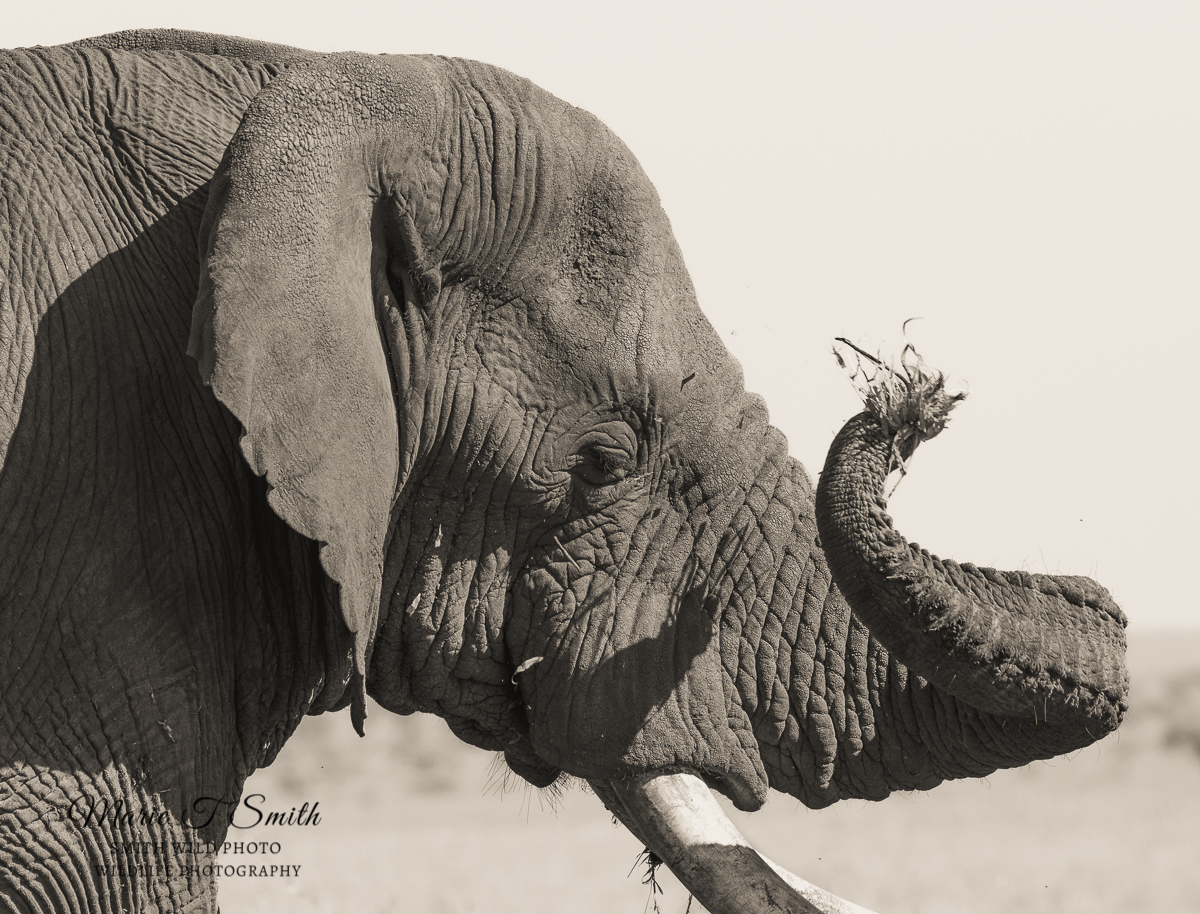
Elephants too were thin on the ground. And I do love getting a good shot of an elephant. So even when the conditions were against us (harsh light, distance) I will still try and do something.
But as we had to keep reminding ourselves, this was primarily a big cat tour. And those felines were showing in abundance.
Reflecting on our return to Africa
I speak for us both when I say we know we are incredibly lucky to have been able to experience, first hand, somewhere so beautiful. It really is hard to put into words just how vast the plains were. Even broken by the occasional Kopje, the horizon seemed to go on forever. And with it came an incredible feeling of peace and tranquillity. Once seen, never forgotten.
Top of the highlights has to be the cheetah mum and cubs. Closely followed by the Servil. Then again, the genet lurking by our tent one night was fab too. Especially when our Maasai askari came and took me by the arm to go and look for it in the dark. And the lions and hyenas calling, throughout the night are always spine-tingling. For some, a disturbed sleep. For me the perfect lullaby.
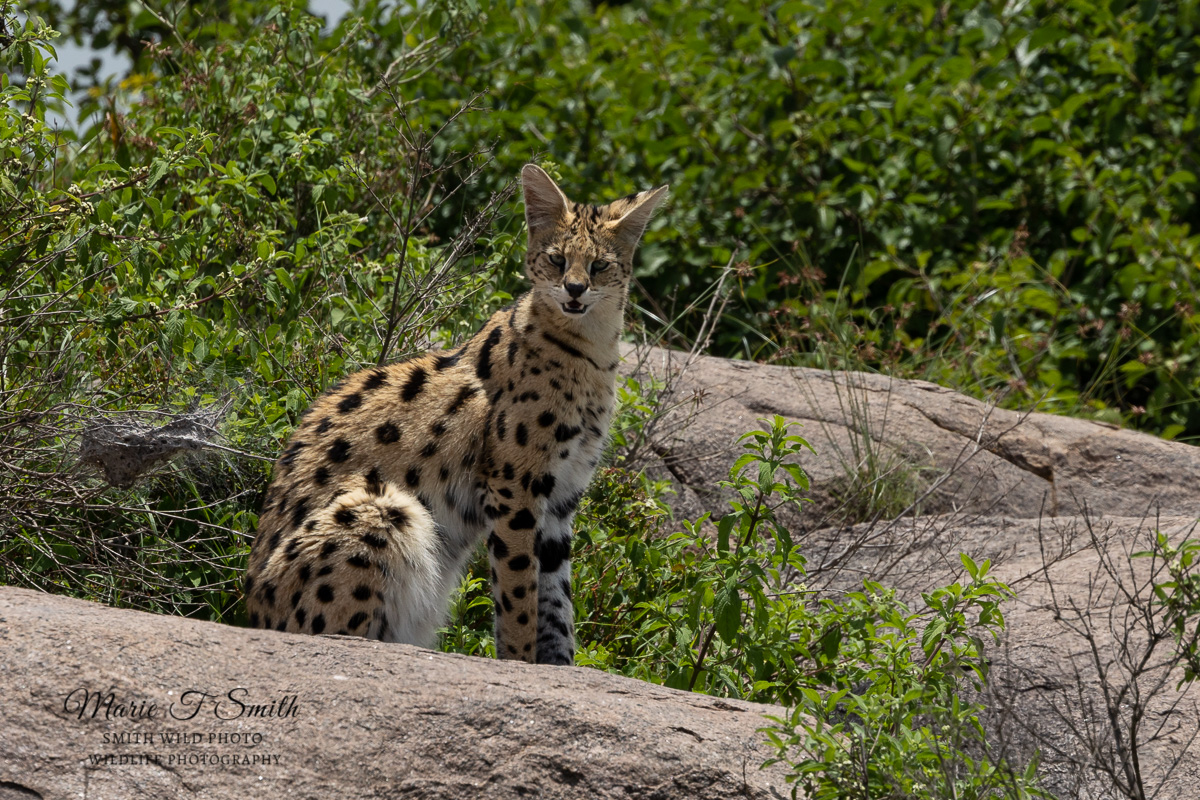
Will we return to the Serengeti?
In all honesty? I expect not.
Don’t get me wrong, putting aside all the challenges, it’s been a memorable experience. We went to get great photographs of the wildlife, and those cats sure put on a good show. But it was also a chance to see the one place everyone expects you to have visited when you mention Tanzania. And we are really happy we have been able to see it with our own eyes. To hear the sounds through our own ears. And come home with a few images we are proud of.
It’s just that some places are meant to be a ‘once in a lifetime’ experience. This was ours.
Besides, there are still so many more places to see. There are also parts of Africa that are already under our skin and will always draw us back, again and again. We have lost two precious travel years to a virus, and still have some catching up to do.
Besides, none of us knows how much time we have left. So it’s important spend it where you are happiest, don’t you think?
So yes, we are bound to return to Africa, for as long as we are able to. In fact, our next trip is already on the calendar.
But for now, it’s back to processing a few more Serengeti memories.
What’s that you say? The car? Oh, it was absolutely fine. They even cleaned it and brought it back to the airport for our drive home. And threw in a free pen too.
If you would like to purchase any prints or wall art from our Africa collection then head to our African Wildlife page. Or contact us if you have a specific subject and we’d be thrilled to check through our archives for you.
References:
- Big Jet TV on YouTube
- Serengeti Geology and Kopjes https://www.serengeti.com/geology-serengeti-national-park.php
- At the time of writing this blog (10 March 2022) passengers travelling/returning to the UK are required to have completed a Passenger Locator Form. These were checked on departure before boarding our plane – not always on arrival.
- The Great Migration Map Discover Africa
